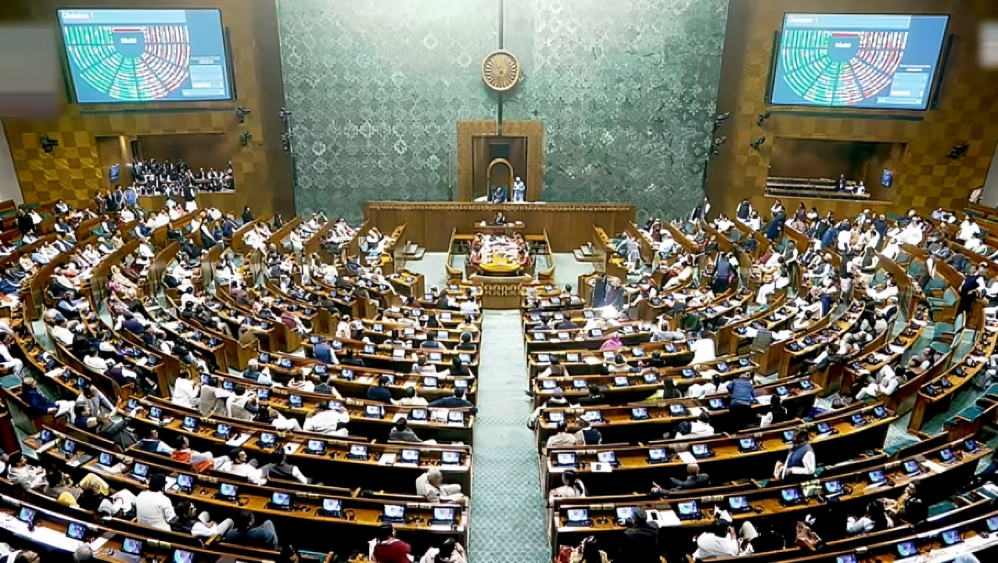The Future of Elections: Exploring the Shift to Fixed Tenures in India


News:
The Constitution (One Hundred and Twenty-Ninth Amendment) Bill, 2024, was introduced in the Lok Sabha on December 17, aiming to synchronize the terms of the Lok Sabha and state assemblies. The bill proposes simultaneous elections every five years and addresses mid-term election procedures, sparking debates on its impact on federalism and political accountability.
Arguments in Favor of the Bill:
Greater Stability: A fixed five-year term for both the Lok Sabha and State Assemblies would provide a more stable political environment. This stability allows governments to focus on governance and long-term policy implementation without the disruption of frequent elections. For example, the U.S. presidential system operates on a fixed term, providing clarity and focus on governance.
Reduction in Election Expenditure: By aligning elections for Lok Sabha and State Assemblies, the proposal could reduce the overall costs incurred by the Election Commission and State governments. The Election Commission of India spends approximately ₹4,500-5,000 crore on each general election, and simultaneous elections could lead to significant savings in logistics, manpower, and resources, despite political parties still incurring substantial expenses.
Efficient Election Management: Conducting simultaneous elections would simplify the election process, reducing the frequency of election cycles. This would ease the burden on the Election Commission, administrative bodies, and security forces, ensuring more efficient election management and faster results. For instance, 2019 Lok Sabha elections saw over 900 million voters—a simultaneous election could streamline this massive undertaking.
Political Accountability: Frequent elections often force politicians to engage with the electorate and be accountable. While fixed terms reduce the frequency of elections, mid-term elections remain an option, ensuring that political parties stay engaged and responsive. The 2014 Delhi Assembly elections show that despite the BJP‘s success at the Centre, voters elected AAP at the state level, proving voters’ ability to make distinct choices.
Standardized Electoral Timelines: Aligning State Assembly elections with the Lok Sabha elections would standardize the electoral process across the country. This simplification helps reduce confusion, improve coordination, and ensure the smooth flow of democratic processes, especially in a diverse and populous nation like India.
Improved Governance: Fixed tenures could allow governments to implement policies without the constant distraction of upcoming elections, leading to more consistent governance. For instance, during the 2019-2024 term, the government’s focus on policy continuity (e.g., GST, Make in India) was often interrupted by periodic election cycles.
National Unity: Holding all major elections at the same time encourages collective participation in the democratic process, fostering a sense of unity. This approach can reinforce the idea of a unified nation, where citizens engage in the political process at both the national and state levels simultaneously, strengthening democratic cohesion.
Arguments Against the Bill:
Undermining Federalism: Aligning State Assembly elections with the Lok Sabha elections could undermine the autonomy of State governments. States should have the freedom to dissolve their assemblies based on local political situations, rather than being bound to a national election cycle. The Indian Constitution provides a federal structure, and this proposal risks disrupting it by curtailing state autonomy, as stated by P.D.T. Achary.
Political Instability at State Level: States may face political crises that require mid-term elections. However, the Bill’s fixed tenure system could prevent them from responding flexibly to these crises, potentially exacerbating local political tensions. For instance, Madhya Pradesh (2020) and Karnataka (2019) saw significant political shifts, with mid-term elections required to resolve instability.
Loss of Political Plurality: Simultaneous elections could push voters to choose the same party for both Centre and State Assemblies, reducing the diversity of regional political parties. This could lead to the dominance of national parties, potentially marginalizing regional political voices. The 2014 Delhi elections demonstrated that voters can distinguish between state and central elections, but such distinctions may become harder under simultaneous elections.
Reduced Flexibility in Response to Political Crises: The current system allows for the dissolution of legislatures to address changing political conditions (e.g., hung Assemblies or coalition failures). Fixed tenures would reduce this flexibility, hindering the ability to address political deadlocks. The 2013 Delhi elections, where the AAP and Congress could not form a government, highlight the need for flexibility in addressing such situations.
Risk of Shorter Tenures: If mid-term elections occur, the newly elected legislature would serve a reduced term, which may lead to inefficiency and instability. For example, a government collapse early in the term could result in a Lok Sabha with a tenure of only one year or less, as seen in Karnataka (2019) after MLA defections.
Potential for Erosion of Regional Identity: Aligning State elections with the Lok Sabha elections could overshadow regional issues by shifting the focus to national politics. This could erode regional identity, as seen in Tamil Nadu, where local issues often dominate the political discourse, and national party politics may overshadow them.
Uncertainty in Governance: The Bill does not guarantee that simultaneous elections will result in improved governance. The U.K.’s Fixed-Term Parliaments Act (2011) was criticized for constitutional crises and policy paralysis, and there is a risk that similar issues could arise in India, especially with the added complexity of mid-term elections and truncated terms.
Conclusion:
The proposal for fixed tenures offers benefits like political stability, reduced election costs, and improved governance. However, it risks undermining federalism, limiting flexibility in handling political crises, and marginalizing regional parties. While it could streamline elections, careful consideration is needed to balance national unity with state autonomy and regional identities.